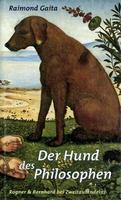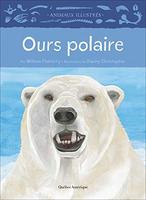
photo credits: Wikimedia Commons
Animals are multicellular, eukaryotic organisms in the biological kingdom Animalia. With few exceptions, animals consume organic material, breathe oxygen, have myocytes and are able to move, can reproduce sexually, and grow from a hollow sphere of cells, the blastula, during embryonic development. As of 2022, around 2.16 million living animal species have been described—of which around 1.05 million are insects, over 85,000 are molluscs, and around 65,000 are vertebrates. It has been estimated there are as many as 7.77 million animal species on Earth. Animals' body lengths range from 8.5 μm (0.00033 in) to 33.6 m (110 ft). They have complex ecologies and interactions with each other and their environments, forming intricate food webs. The scientific study of animals is known as zoology, and the study of animal behaviors is known as ethology. Most living animal species belong to the infrakingdom Bilateria, a highly proliferative clade whose members have a bilaterally symmetric body plan. Extant bilaterians include the basal group Xenacoelomorpha, but the vast majority belong to two large superphyla: the protostomes, which include phyla such as arthropods, molluscs, flatworms, annelids and nematodes, etc.; and the deuterostomes, which include the three phyla echinoderms, hemichordates and chordates, the latter with the vertebrates being its most successful subphylum. Precambrian life forms interpreted as early complex animals were already present in the Ediacaran biota of the late Proterozoic, but fossils of primitive sponge and other speculative early animals have been dated to as early as the Tonian period. Nearly all modern animal phyla became clearly established in the fossil record as marine species during the Cambrian explosion, which began around 539 million years ago (Mya), and most classes during the Ordovician radiation 485.4 Mya. 6,331 groups of genes common to all living animals have been identified; these may have arisen from a single common ancestor that lived 650 Mya during the Cryogenian period. Historically, Aristotle divided animals into those with blood and those without. Carl Linnaeus created the first hierarchical biological classification for animals in 1758 with his Systema Naturae, which Jean-Baptiste Lamarck expanded into 14 phyla by 1809. In 1874, Ernst Haeckel divided the animal kingdom into the multicellular Metazoa (now synonymous with Animalia) and the Protozoa, single-celled organisms no longer considered animals. In modern times, the biological classification of animals relies on advanced techniques, such as molecular phylogenetics, which are effective at demonstrating the evolutionary relationships between taxa. Humans make use of many other animal species for food (including meat, eggs and dairies), for materials (such as leather, fur and wool), as pets and as working animals for transportation, and services. Dogs, the first domesticated animal, have been used in hunting, in security and in warfare, as have horses, pigeons and birds of prey, while other terrestrial and aquatic animals are hunted for sports, trophies or profits. Non-human animals are also an important cultural element of human evolution, having appeared in cave arts and totems since the earliest times, and are frequently featured in mythology, religion, arts, literature, heraldry, politics and sports. Source: Wikipedia (en)
Works about animal 113
- A Moose for Jessica
- Animal
- 3D Nephrology in Small Animals
- Visst katten har djuren själ!
- Ḥayāt al-ḥayawān al-kubrā
- Catch the goat
- Živalske podobe
- Postcolonial Animalities
- Mon imagier des bébés animaux
- Klassen und Ordnungen des Thier-Reichs, wissenschaftlich dargestellt in Wort und Bild
- Ich bin die/der kleine ...
- Nette Skelette
- Léonardo le lionceau
- Pas de bananes pour une girafe
- Der Kosmos-Spurenführer
- Naturspaziergang am Wasser
- Der Hund des Philosophen
- Yoga pour les enfants avec Nomasté le singe
- Le lac de singes
- Les trois frères
- Un zoo dans mon jardin
- Awâsis et la délicieuse bannique
- Ours Polaire
- Où vont-ils quand il pleut ?
- Les Chiens Sauvages
- Lili Souris trouve un ami
- Les animaux de la campagne
- Les animaux.
- Bonjour, gentils animaux!
- Les animaux du monde
- LES AVENTURES DE GRELOT. - Avec peluche
- Le jour du marché
- Animaux de chez nous
- Meuh, la vache!
- Duck et ses amis
- Le Jamais-content
- Mes animaux familiers à toucher
- La Petite Poule Rousse
- Spot Goes to the Farm
- Les merveilles de la nature
- Combien t'as de pattes ?
- Les animaux de la ferme
- Quel est ce cri ?
- Saute, saute, Pénélope !
- Graine de Calcaire
Genre - wd:Q729



























